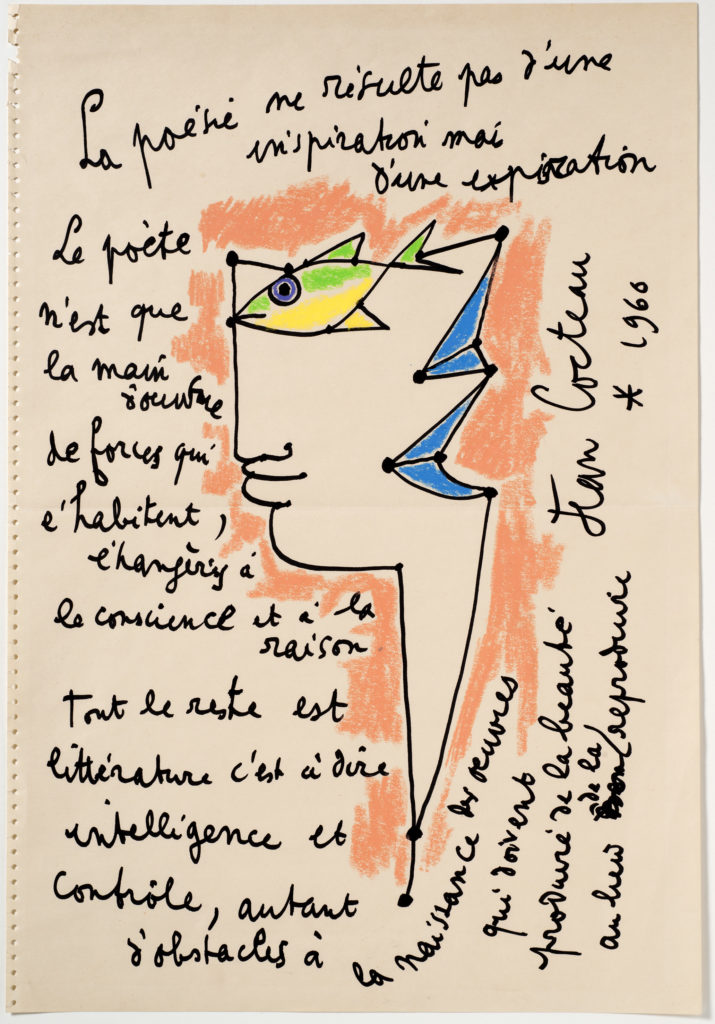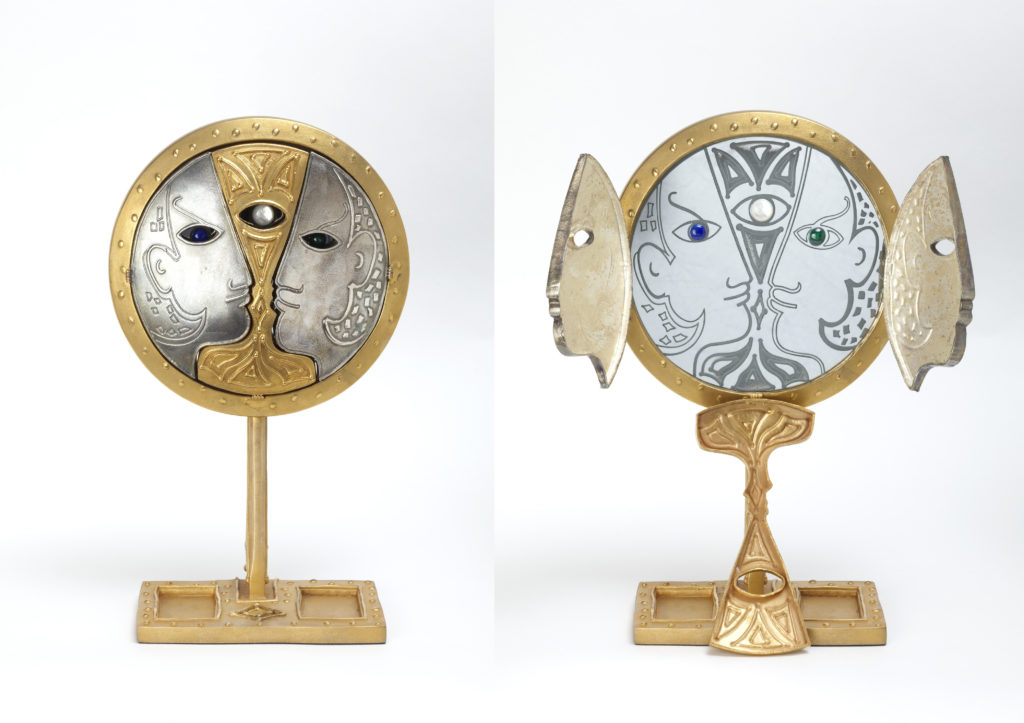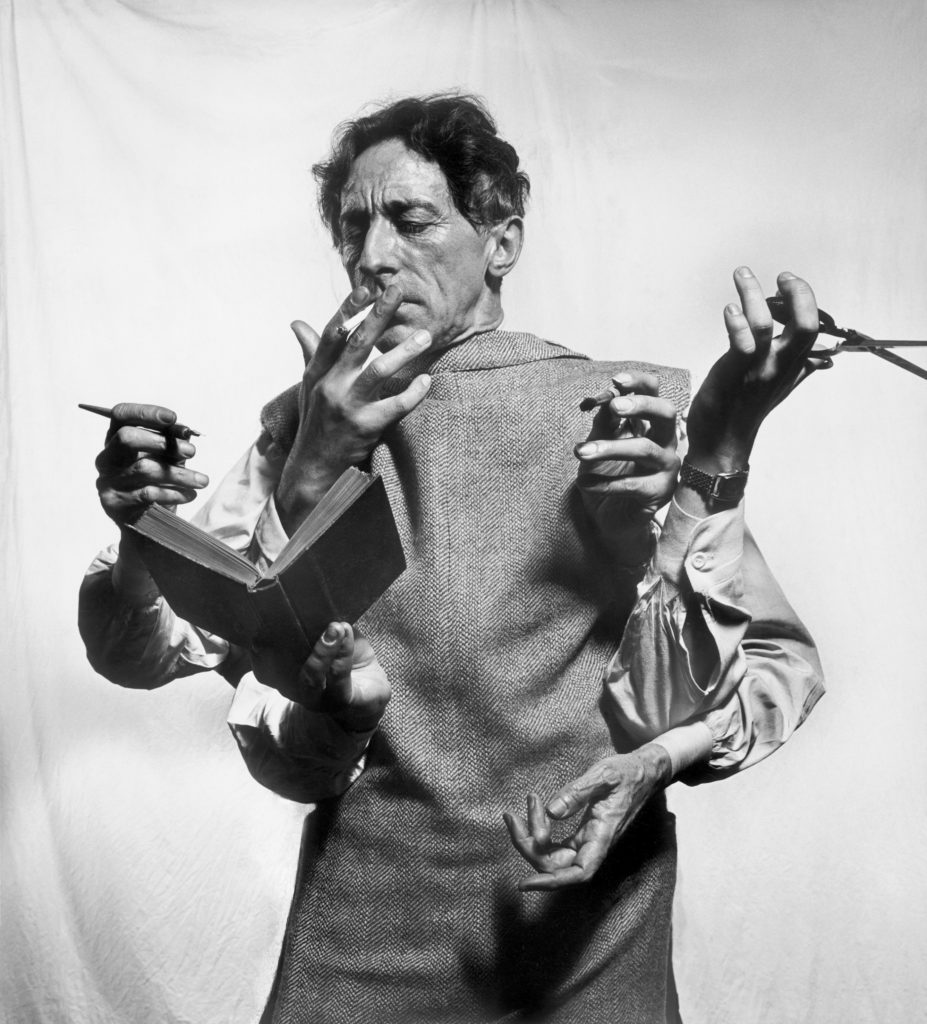Share the post "Sacred Monster: a celebratory and educational project around Jean Cocteau’s figure. Interview with Chloë Cassens from the Severin Wunderman Collection"
Severin Wunderman (1938-2008) was an entrepreneurial visionary and creative genius who left an indelible mark on the world of business and philanthropy. Through his incredible capacity for innovation and his dedication to quality, he has shaped multiple industries, leaving behind a legacy that he continues to inspire and influence.
In this exclusive interview, we have the honor of speaking with Chloe Cassens the representative of the Severin Wunderman Collection in Menton, France, above all, she is Wunderman’s granddaughter.
She is a key figure in telling us about the intellectual legacy that her grandfather left us and also in presenting the ongoing project SACRED MONSTER which involves the figure of the French writer and playwright Jean Cocteau (1889-1963) of whom Wunderman was an obsessed collector.
Cassens shares with us not only his professional aspect but in her words, we can also feel his humanity and his philosophy of life. Through stories and anecdotes, we will discover the distinctive traits of this extraordinary leader, his successful strategies, and his lasting impact on the global business landscape as GUCCI Timepieces.

An immersion in the lives and thoughts of exceptional individuals like Severin Wunderman not only inspires us, but offers us valuable lessons on leadership, innovation, and determination in support of important causes, among others, such as the Holocaust.
Severin Wunderman was born in 1938 in Brussels, Belgium, shortly before the outbreak of World War II; due to Nazi anti-Semitic laws and the German occupation of Belgium, Wunderman’s family was forced into hiding to avoid persecution during the Holocaust.
His family was of Jewish origin, and this put them at risk of being persecuted by the Nazis. Wunderman is a survivor thanks to his father’s intuition because he entrusted him to a Catholic priest who hid him in a center for blind children in the Belgian countryside.
After the war, Severin Wunderman emigrated to the United States, where he began the entrepreneurial career that would lead him to become a leading figure in the business world. And so, through the eyes and memories of Chloe Cassens, we begin this journey into the life and work of Severin Wunderman as an opportunity to reflect on the power of vision and the importance of pursuing one’s dreams with passion and commitment.

The SACRED MONSTER project was created in conjunction with the exhibition Jean Cocteau: The Juggler’s Revenge at the Peggy Guggenheim Collection in Venice, Italy, which opened its doors last April 13, until September 18, 2024.
What memories do you have of your grandfather Severin Wunderman? What relationship did you have?
I have many beautiful memories of my grandfather, and I cherish them all. I particularly loved days when he’d tell my mother that he was taking me to work with him instead of school; I’d shadow him around the Corum offices. Our relationship was a close one. I think I speak for all of my family members when I say that we all miss him dearly and think about him every day.
Wunderman was a Belgian-American entrepreneur and art collector, primarily known for his career in the watch industry and for amassing a vast collection of artworks and decorative art objects. Among the many artists like Picasso, Mirò, and Chagall, he also collected Jean Cocteau, considered a multifaceted and influential figure in 20th-century art and culture. Did he have a particular love for any of Cocteau’s works?
Yes! His obsession with art originated with his obsession with Cocteau. The first piece of art he bought was a Cocteau, which he got when he was 19 years old. The rest came over the course of his entire life. He never stopped collecting art, and he never deviated from one artist to another; all of his collection stemmed from Cocteau.
So, for instance, he had Picassos not because he was a huge fan of Picasso but because Picasso was a close friend of Cocteau’s.

Severin Wunderman was a man who revolutionized the watch industry with GUCCI Timepieces, and among the causes he supported were Holocaust remembrance, medical research, and individual self-sufficiency. What value do these topics hold for you?
These topics are all extremely important to me. I feel like so much of the evils of the world, so much of the bad side of humanity that we see today and that has existed for history simply comes from lack of education, and self-sufficiency grows from education.
Continue on MuseumWeek magazine.
